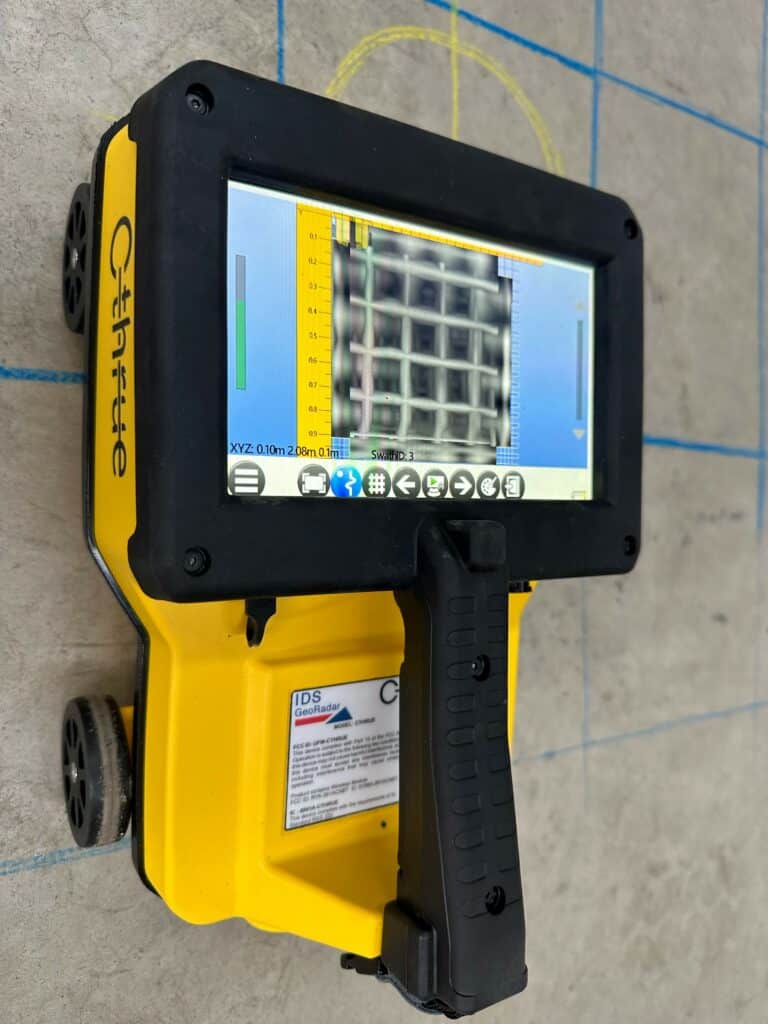Checking Out the Depths: A Comprehensive Overview to Concrete Scanning and Its Diverse Applications
In the realm of construction and facilities advancement, the careful process of concrete scanning holds a pivotal function in making sure the structural stability and safety of tasks. As modern technology proceeds to advance, the applications of concrete scanning have increased much past simple surface-level analyses. From discovering rebar and post-tension cable televisions to drawing up conduits and gaps concealed within concrete structures, the capacities of modern scanning techniques are both vital and impressive. Nonetheless, real depth of concrete scanning's potential reaches even better, branching into unforeseen industries and sparking cutting-edge services. The interconnected internet of opportunities that concrete scanning presents is not just fascinating but likewise vital for the innovation of various sectors.
Importance of Concrete Scanning
Understanding the relevance of concrete scanning is critical in making sure the security and honesty of structures throughout building and renovation tasks. Concrete scanning uses sophisticated technologies such as ground-penetrating radar (GPR) and electro-magnetic induction to discover embedded items, voids, or various other anomalies within concrete frameworks.
Furthermore, concrete scanning plays a critical duty in making sure compliance with building ordinance and regulations that mandate the defense of existing structural parts during building and construction tasks. By accurately drawing up the interior make-up of concrete, scanning modern technologies enable building professionals to make enlightened decisions that support the architectural security and sturdiness of buildings and facilities projects. Basically, the significance of concrete scanning exists in its ability to protect both the architectural integrity and the workers entailed in building endeavors.
Technologies Made Use Of in Concrete Scanning
Concrete scanning relies on sophisticated innovations such as ground-penetrating radar (GPR) and electromagnetic induction to properly spot ingrained items and anomalies within concrete structures. Ground-penetrating radar operates by giving off high-frequency electro-magnetic waves right into the concrete.
Electro-magnetic induction, on the other hand, works by producing magnetic fields around a concrete framework via a transmitter coil. When steel objects exist within the concrete, they disrupt these electro-magnetic areas, creating eddy currents to move via the steel. By determining the modifications in the electro-magnetic areas with a receiver coil, the system can identify the place of metallic things in the concrete.
These advanced innovations play a critical function in non-destructive testing, guaranteeing the security and integrity of concrete frameworks in different industries.
Applications in Building Market
Within the building and construction industry, concrete scanning modern technology finds diverse applications that boost project performance and safety. In addition, concrete scanning is made use of for situating gaps, such as air pockets or locations of degeneration within concrete, which can jeopardize the overall strength of a framework. Concrete scanning plays an essential function in top quality control by validating the density of concrete covers over support, making certain conformity with style specifications and standards.

Safety Advantages of Concrete Scanning
In the realm of building and construction security, the implementation of concrete scanning modern technology presents a vital advantage in preemptively recognizing potential dangers and fortifying architectural integrity. By using sophisticated scanning approaches such as ground-penetrating radar (GPR) and electro-magnetic induction, construction teams can precisely situate rebar, post-tension cords, conduits, and other covert items within concrete frameworks. This aggressive method considerably minimizes the threat of unintended strikes during boring, visit this website reducing, or coring tasks, thereby avoiding pricey damages, injuries, and project delays.
Additionally, concrete scanning boosts worker safety and security by providing real-time information use this link about the structural problem of concrete elements. This data allows building and construction professionals to examine the stability of existing structures, recognize wear and tear or defects, and make informed decisions concerning repair service and maintenance procedures. By addressing potential safety concerns immediately, concrete scanning adds to developing a safe workplace and alleviating the chance of architectural failures or accidents on construction sites. Ultimately, the safety benefits of concrete scanning not just guard properties and lives yet also support industry requirements for top quality and reliability.
Future Fads in Concrete Scanning
Emerging developments in scanning technology are poised to revolutionize the field of concrete inspection and evaluation. One major pattern that is gaining traction is the combination of artificial intelligence (AI) and artificial intelligence algorithms right into concrete scanning tools. By using the power of AI, these systems can examine large quantities of information collected throughout scanning procedures to provide more in-depth and accurate insights right into the problem of concrete frameworks. This can help in identifying surprise defects, forecasting prospective architectural failings, and also advising upkeep strategies.
Another substantial fad is the development of even more straightforward and portable scanning devices. Miniaturization of scanning devices permits for simpler accessibility to restricted rooms and remote locations, making assessments a lot more efficient and thorough. Additionally, improvements in wireless interaction modern find here technologies allow real-time data transfer and evaluation, helping with quicker decision-making processes.
Additionally, there is a growing concentrate on sustainability in concrete scanning technologies - RainierGPR Concrete Scanning. Producers are increasingly incorporating eco-friendly products and energy-efficient features right into their tools to decrease environmental influence. These future fads are established to enhance the effectiveness, accuracy, and sustainability of concrete scanning techniques, forming the industry's future landscape
Final Thought
In conclusion, concrete scanning plays an essential duty in the building sector by ensuring the security and effectiveness of various tasks. As technology developments, the future of concrete scanning holds appealing developments for improving building processes.
